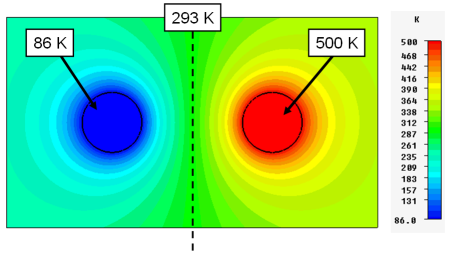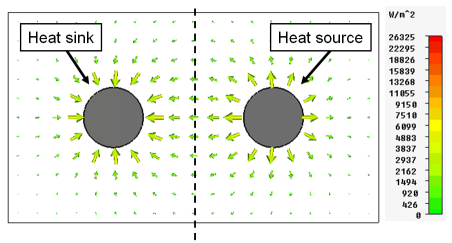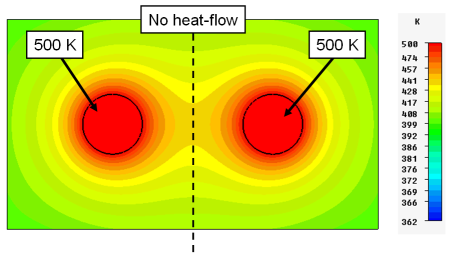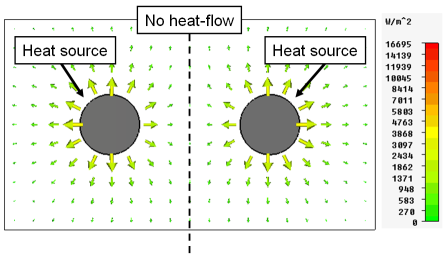

In case an electromagnetic symmetry plane was activated, it is possible to specify the thermal properties of the symmetry. Two types of thermal symmetries exist:
Isothermal symmetry plane
This type of thermal symmetry assigns a constant temperature value to the symmetry plane. The heatflow density vector is normal to the symmetry plane. Temperature values below the symmetry plane are symmetric to the corresponding values above the plane with respect to the value on the symmetry plane:

Temperature plot with isothermal symmetry plane: The temperature values are mirrored with respect to the temperature value at the symmetry.
Below isothermal symmetry planes heat sources and loss distributions are converted to heat sinks. Especially for imported loss distributions from electromagnetic solvers this is probably not the desired behavior.

The heat flow through an isothermal symmetry plane has only a normal component, whereas heat sources (like heat loss distributions) are converted to heart sinks.
Note: With this type of symmetry condition one can easily create setups which will lead to temperature distributions with temperature values below 0 degrees K. Please check your results carefully after the solver run has been completed.
Adiabatic symmetry plane
With the adiabatic symmetry plane the heat flow density through the plane is set to be zero. Temperatures and heat sources / heat sinks do not change when mirrored:

Temperature plot with adiabatic symmetry plane: The mirrored temperature values remain unchanged.

The heat flow density through an adiabatic symmetry plane is zero. Heat sources are not converted to heat sinks.
See also